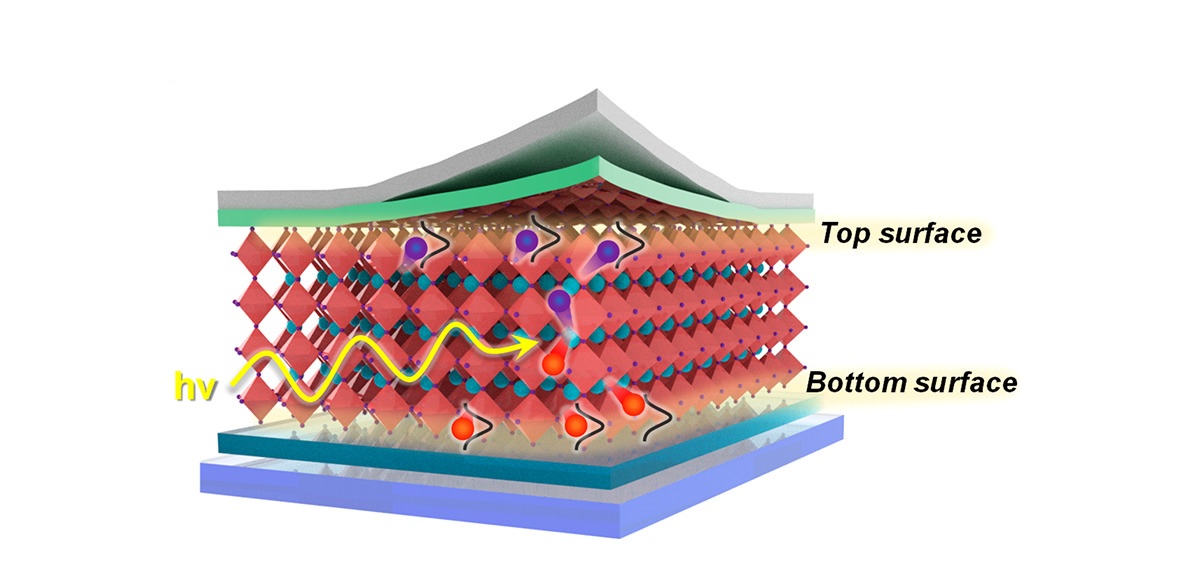
When it comes to the study of Chemistry, understanding surface defects is of utmost importance. Surface defects refer to any irregularities or imperfections that occur at the outermost layer of a material. These defects can have significant implications on the properties and performance of the material. From altering the optical properties to impacting the mechanical strength, surface defects play a vital role in several scientific and industrial applications.
In this article, we will unveil 19 unbelievable facts about surface defects that will pique your curiosity and expand your knowledge in the field of Chemistry. So, brace yourself for an intriguing journey as we delve into the captivating world of surface defects and discover their profound impact on various materials and processes.
Key Takeaways:
- Surface defects can occur naturally in minerals, rocks, and even organic materials, affecting their appearance and performance. They can also be found in liquids and gases, not just solid objects.
- Understanding and preventing surface defects is crucial in various industries, from aerospace to food processing. Techniques like polishing and coating can help minimize defects, ensuring product quality and customer satisfaction.
Surface defects can occur naturally.
Nature is full of surprises, and even materials found in their natural state can have surface defects. This phenomenon can be observed in minerals, rocks, and even organic materials.
Surface defects are not limited to solid materials.
While we often associate surface defects with solid objects, they can also occur in liquids and gases. For example, bubbles in a liquid or impurities in a gas can create surface defects.
Surface defects can be caused by external factors.
External factors such as temperature changes, mechanical stress, and chemical reactions can contribute to the formation of surface defects. Understanding these factors is crucial in preventing and minimizing surface defects.
Surface defects can affect the structural integrity of a material.
In some cases, surface defects can compromise the structural integrity of a material, making it weaker and more prone to failure. This is especially significant in industries such as aerospace and manufacturing, where strong and defect-free materials are crucial.
Surface defect analysis is a specialized field.
Understanding and analyzing surface defects require specialized knowledge and techniques. Experts in surface defect analysis use advanced microscopy and spectroscopy techniques to identify and characterize various types of defects.
Surface defects can be classified into different categories.
Surface defects can be classified into categories such as scratches, pits, cracks, stains, and blisters. Each type of defect has its own distinctive characteristics and causes.
Surface defects can be classified based on their size.
Surface defects can range in size from microscopic to visible to the naked eye. The size of the defect often determines its severity and impact on the material’s functionality.
Surface defects can be mitigated through surface treatments.
Surface treatments such as polishing, coating, and etching can help minimize or eliminate surface defects. These treatments improve the overall appearance and performance of the material.
Surface defects can be used in forensic investigations.
Surface defects can provide valuable clues in forensic investigations. The analysis of surface defects on materials can help determine the cause of a failure or identify potential sources of contamination.
Surface defects can be found in various industries.
Surface defects are not limited to a specific industry. They can be found in industries such as automotive, electronics, textiles, and even food processing. Recognizing and preventing surface defects is crucial for ensuring product quality and customer satisfaction.
Surface defects can be repaired.
In some cases, surface defects can be repaired or mitigated. Techniques such as sanding, filling, and painting can help restore the surface to its original condition.
Surface defects can impact optical properties.
Surface defects can affect the optical properties of materials, such as light transmission, reflection, and refraction. This is particularly important in industries such as optics and photonics.
Surface defects can be caused by manufacturing processes.
Manufacturing processes such as machining, casting, and molding can introduce surface defects if not performed accurately or with the right materials. Quality control measures are essential to minimize these defects.
Surface defects can be invisible to the naked eye.
Some surface defects are so small or subtle that they are not visible to the naked eye. Advanced imaging techniques such as scanning electron microscopy are used to detect and analyze these defects.
Surface defects can impact product durability.
A material with surface defects may have reduced durability and longevity. This is particularly important in applications where materials are exposed to harsh environmental conditions or repetitive stress.
Surface defect prevention begins with design.
Designing materials with proper surface finishes, dimensions, and tolerances is a crucial step in preventing surface defects. Attention to detail during the design phase can significantly reduce the occurrence of defects.
Surface defects can be quantified.
Scientists and engineers have developed quantitative methods to measure and characterize surface defects. Parameters such as roughness, waviness, and porosity are used to assess the severity and impact of defects.
Surface defects can be influenced by environmental conditions.
Environmental conditions such as humidity, temperature, and exposure to chemicals can influence the formation and behavior of surface defects. Controlling these conditions is essential in preventing the occurrence or progression of defects.
Surface defects can be a source of aesthetic appeal.
In some cases, surface defects can be intentionally introduced to enhance the aesthetic appeal of a material or product. This technique is often used in fields such as art, jewelry, and interior design to create unique and visually striking effects.
Surface defects are a fascinating aspect of materials science that bridges the gap between functionality and aesthetics. Understanding the causes, impacts, and prevention of surface defects is crucial in various industries and plays a vital role in ensuring product quality and customer satisfaction. So, the next time you come across a surface defect, remember the intriguing facts behind it!
Conclusion
Surface defects can have a significant impact on the properties and performance of a material. In this article, we explored 19 unbelievable facts about surface defects. We learned that surface defects can occur during manufacturing, processing, or even as a result of external forces. These defects can range from scratches and cracks to pits and roughness.
Surface defects not only affect the visual appearance of a material but also play a crucial role in its mechanical, electrical, and chemical properties. Understanding and characterizing these defects is essential for ensuring the quality and efficiency of various industries, including manufacturing, automotive, aerospace, and electronics.
By delving into the fascinating world of surface defects, we gain insights into the challenges faced by materials scientists and engineers in their quest to develop flawless materials. From detecting defects using advanced imaging techniques to employing various surface treatment methods, researchers are constantly pushing the boundaries of material science.
In conclusion, the study of surface defects is a constantly evolving field with endless possibilities for discovery and innovation. By unraveling the mysteries of surface defects, we unlock new opportunities for improving materials and advancing technological advancements.
FAQs
Q: What are surface defects?
A: Surface defects are imperfections or irregularities that occur on the outermost layer of a material. They can include scratches, cracks, pits, roughness, and other anomalies that affect the surface quality.
Q: How do surface defects affect materials?
A: Surface defects can affect the mechanical, electrical, and chemical properties of materials. They can weaken structural integrity, reduce conductivity, promote corrosion, and impair functional performance.
Q: How are surface defects detected?
A: Surface defects can be detected through various techniques such as visual inspection, microscopy, X-ray imaging, ultrasonic testing, and other non-destructive testing methods.
Q: What causes surface defects?
A: Surface defects can be caused by manufacturing processes, material impurities, improper handling, environmental factors, wear and tear, and external forces like impact or abrasion.
Q: How are surface defects treated?
A: Surface defects can be treated through processes like polishing, grinding, plating, coating, thermal treatment, and other surface modification techniques to improve the surface integrity and remove or minimize defects.
Surface defects may seem like minor imperfections, but their impact can be far-reaching. From natural occurrences to manufacturing mishaps, these fascinating flaws hold secrets waiting to be uncovered. Quality control inspectors play a crucial role in identifying and mitigating surface defects across industries, ensuring products meet the highest standards of excellence. So, whether you're a curious reader or a professional seeking to expand your knowledge, keep exploring the captivating world of surface defects and the unsung heroes who work tirelessly to maintain quality.
Was this page helpful?
Our commitment to delivering trustworthy and engaging content is at the heart of what we do. Each fact on our site is contributed by real users like you, bringing a wealth of diverse insights and information. To ensure the highest standards of accuracy and reliability, our dedicated editors meticulously review each submission. This process guarantees that the facts we share are not only fascinating but also credible. Trust in our commitment to quality and authenticity as you explore and learn with us.


